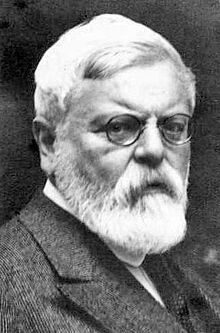Theodor Fischer
- Machine translation, like DeepL or Google Translate, is a useful starting point for translations, but translators must revise errors as necessary and confirm that the translation is accurate, rather than simply copy-pasting machine-translated text into the English Wikipedia.
- Do not translate text that appears unreliable or low-quality. If possible, verify the text with references provided in the foreign-language article.
- You must provide copyright attribution in the edit summary accompanying your translation by providing an interlanguage link to the source of your translation. A model attribution edit summary is
Content in this edit is translated from the existing German Wikipedia article at [[:de:Theodor Fischer]]; see its history for attribution. - You may also add the template
{{Translated|de|Theodor Fischer}}to the talk page. - For more guidance, see Wikipedia:Translation.
Theodor Fischer | |
|---|---|
 Theodor Fischer 1933 | |
| Born | (1862-05-28)28 May 1862 Schweinfurt, Kingdom of Bavaria |
| Died | 25 December 1938(1938-12-25) (aged 76) Munich, Germany |
| Occupation | Architect |
Theodor Fischer (28 May 1862 – 25 December 1938) was a German architect and teacher.
Career
Fischer planned public housing projects for the city of Munich beginning in 1893. He was the joint founder and first chairman of the Deutscher Werkbund (German work federation, 1907), as well as member of the German version of the Garden city movement. In 1909, Fischer accepted a position as professor for architecture at the Technical University of Munich.
Notable pupils
Famous pupils of Fischer include Paul Bonatz, Hugo Häring, Ernst May, Erich Mendelsohn, JJP Oud, Bruno Taut, German Bestelmeyer and Paul Schmitthenner.
Style
Originally an imitator of historical styles, he changed direction, seeking a style which was closer to German tradition; his rediscovery of the expressive qualities of stone influenced many of his pupils, and his search for a more genuinely volkisch style explains his nationalist utterances in the early part of the Third Reich. Fischer described his own style as something between historicism and art nouveau. He tried to always work in the local context, and the socio-cultural character of the region, with an eye toward the social effect of his plans.
Bibliography
- Winfried Nerdinger [de] (1988): Theodor Fischer: Architekt Und Staedtebauer, Wilhelm Ernst & Sohn Verlag fur Architektur und technische Wissenschaften (German edition) ISBN 978-3-433-02084-5
- Falko Lehmann (1988): Friedrich Theodor Fischer, 1803-1867: Architekt im Grossherzogtum Baden (Studien zur Bauforschung), Geiger-Verlag (German edition) ISBN 978-3-89264-179-7
External links
 Media related to Theodor Fischer at Wikimedia Commons
Media related to Theodor Fischer at Wikimedia Commons
- v
- t
- e











